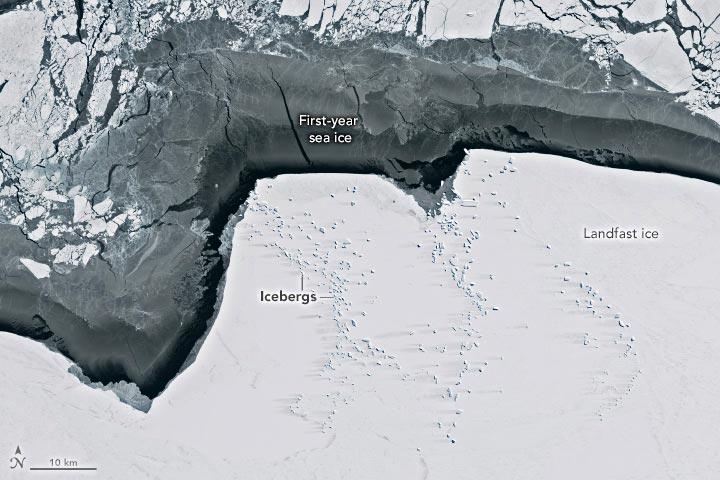
Satellite image of icebergs trapped in fast ice east of East Antarctica’s West Ice Shelf acquired on October 18, 2023, with the Operational Land Imager-2 on Landsat 9.
A scientist spotted a jade hue in the sea ice fastened to the coast of East Antarctica.
Jan Lieser has analyzed countless satellite images of frozen seawater clinging to the coast of East Antarctica. This ice—known as landfast ice or simply fast ice—regulates the seaward flow of land ice and provides habitat for animals. The ice’s textures can be varied but its colors are mostly grayscale. But in October 2023, something green caught his eye.
Discovery of a Green Iceberg
“I came across this jade iceberg in amongst the mix of other bergs trapped in fast ice,” said Lieser, a meteorologist and sea ice scientist with the Australian Bureau of Meteorology and the University of Tasmania. “The larger scene looks inconspicuous enough, but when you zoom right in, you find the one in hundreds.”
That outlier iceberg is visible in these images, acquired on October 18, 2023, with Landsat 9’s OLI-2 (Operational Land Imager-2).
The wide view (above) shows a subset of the icebergs trapped in fast ice that day east of the West Ice Shelf (not pictured). The dark, linear areas on the lee side of the bergs are where wind has blown away the snow to expose bare ice below—a process called wind scouring. The detailed image (below) shows a closer view of the presumably green iceberg. Even in this view, you need to look closely to see the green pixels given the iceberg’s relatively small size.
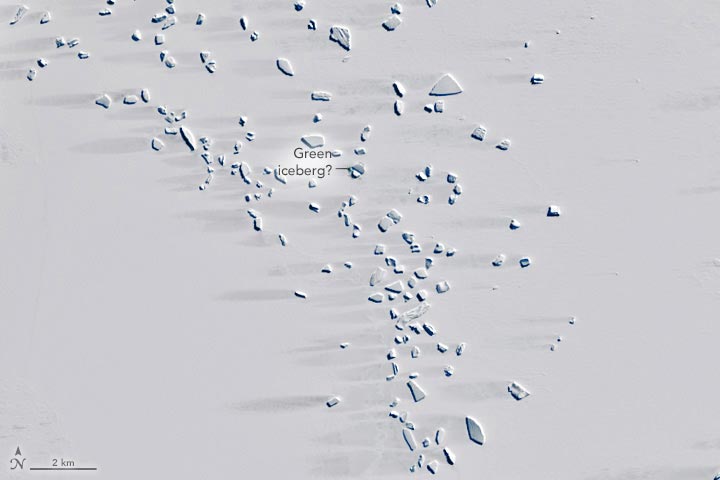
Detailed satellite image of icebergs trapped in fast ice east of East Antarctica’s West Ice Shelf acquired on October 18, 2023, with the Operational Land Imager-2 on Landsat 9.
Colors and Significance of Icebergs
Icebergs range in color from blue (in their pure form) to green. One reason for the green color might be the presence of iron oxides acquired from rock dust on the mainland. Scientists have suggested that such iron-laden bergs might be moving an important nutrient for marine life from the land to sea. Lieser notes that a second satellite image is needed to confirm the greenness of the iceberg pictured here. So far, that image has been elusive. East Antarctica is notoriously cloudy in spring.
Research and Operational Applications
Green icebergs aside, Lieser has both scientific and operational purposes for studying satellite images of fast ice. For example, he uses the images to help ecologists survey and locate seabirds. In this image, an equally small but less colorful spot (brown) on the ice is due to an accumulation of penguin guano.
He also applies insights about the ice’s extent to support people working in East Antarctica. A substantial amount of fast ice can prevent a ship from reaching its destination. Conversely, substantial fast ice might support on-ice transportation such as trucking and various resupply efforts.
Monitoring Changes in Fast Ice
Finally, scientists want to know where fast ice is located and how it is changing. Recent research showed that in 2022, there was a substantial loss of fast ice that had been present for more than two decades.
NASA Earth Observatory images by Wanmei Liang, using Landsat data from the U.S. Geological Survey.


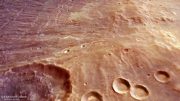


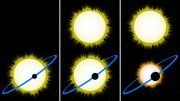
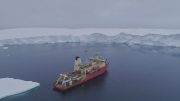


ewhere green iceberg?
Didn’t see a green iceberg anywhere.
The range of colors in icebergs is extraordinary.